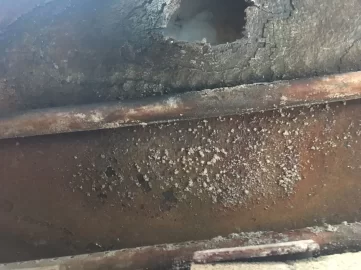Ok so I bought a used century heat stove. It needed some work which I thought I could do myself pretty easily. I noticed that the baffle plate looked pretty rough but was not sure how to replace it. According to SBI help desk the baffle in my stove is SS and needs to be replace by a vermiculite baffle. Has anyone done this before? I asked them for support but have not heard anything back on that yet. Here's a few picture of the baffle and air tubes.


Sent from my iPhone using Tapatalk


Sent from my iPhone using Tapatalk













